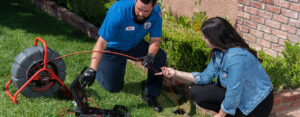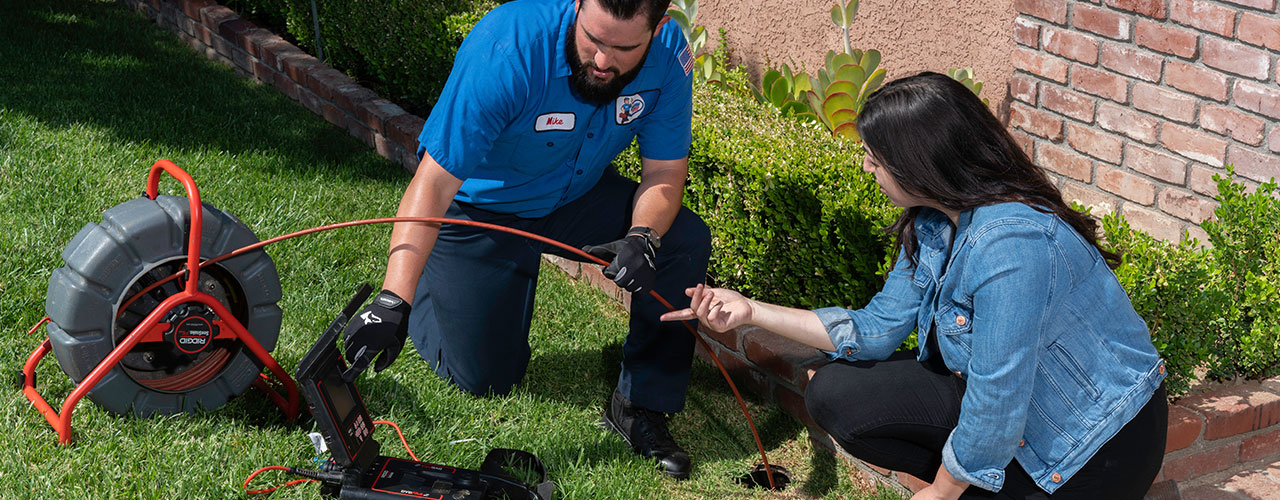Drain cleaning is an important part of your plumbing maintenance. Many different products are available to unclog your drains, from chemical cleaners to natural, eco-friendly alternatives.

For simple clogs, try a plunger or homemade drain cleaners made from baking soda and vinegar. For more serious blockages, you can use an acid drain cleaner but be sure to follow safety guidelines and protect your pipes.
A clogged drain is a household nightmare. Whether you’re trying to hop in the shower for your morning wake-up or get food prep done in the kitchen, having to wait for the water to flow down the drain can ruin your day and maybe even cause some water damage. But before calling a plumber, there are some DIY methods that can help you clear your drains.
The best way to clean a clogged drain depends on how and where the clog formed. For a sink or tub drain, pouring boiling water can often dislodge soap scum buildup and grease clogs. If the clog is in your drain trap, you may need to remove it and clean the entire thing.
There are a variety of tools that can help you with this task, including plastic drain cleaning strips and snakes. A wire hanger can also be used as a more rudimentary option, though you’ll want to use caution and be prepared for some grossness (think decomposing hair and gunk). Simply unwrap the end of the coat hanger and bend it into a small hook, then feed it down the drain. Once it hits the clog, wiggle it around and pull it up. This could take a bit of time, but will eventually break up and clear the clog.
Pouring baking soda and vinegar down your drain can also be a good solution for many clogs. Baking soda is alkaline and vinegar is a mild acetic acid, so when they mix, they react to create foaming action that can dislodge clogs. Mix an equal amount of table salt with the baking soda and pour it down the drain. After a few minutes, add two cups of boiling water down the drain and watch as the mixture flushes away your clog.
To keep your drains working properly, Calabrese recommends using a product like Bio-Clean once a month. It introduces a bacterial strain that will keep your pipes healthy while breaking up any gunk and preventing future blockages. You can purchase this product online or from a local hardware store.
Boiling Water
This is a simple and effective way to clear a clogged drain, particularly one involving hair. Fill a kettle and bring it to a boil, then slowly pour the boiling water down the drain in two or three stages, waiting several seconds between each pour so that the hot water has time to work on the gunk blocking the drain. You may need to repeat this process a few times before the drain is completely clear.
Another useful tip is to use boiling water in combination with baking soda and vinegar. This method is ideal for grease or soap clogs, as the hot water melts the grease and the baking soda works as a natural scouring agent forcing it out of the pipes. Pour a cup of boiling water down the drain, followed by a cup of baking soda and a half cup of white vinegar (it will fizz). Be sure to cover the drain opening to concentrate the cleansing reaction inside the pipe and then flush with more boiling water.
If you’re dealing with a tough clog, it’s possible that the problem extends further into the pipes. If this is the case, it’s best to call a plumber as chemical drain cleaners are more likely to damage your pipes than help them.
A professional can also help if the clog is caused by a broken pipe or sewer backup. In some cases, a plumber will need to snake the drain with a tool called a cable snake, which is essentially a long piece of flexible wire with a hook on the end that’s used to grab and pull the clog out of the pipe. A plumber can also use an auger to break up and remove a clog, but this method is more expensive.
If you’re not comfortable using a plumber, or the clog doesn’t seem to be going away, try a homemade plumbing snake made from a wire coat hanger. Straighten out the hanger as much as you can, then bend one end into a small hook. Fish that end down the drain, hooking onto any hair or gunk stuck in the pipes and pulling it out.
Baking Soda & Vinegar
Using baking soda and vinegar to clean your drain is an all-natural, inexpensive alternative to commercial drain cleaners. This simple hack is quick and easy, and you probably already have the ingredients at home. Plus, it’s much safer for your pipes than corrosive chemicals that can eat away at your pipes and cause chemical burns on your skin.
When you pour baking soda and vinegar down your drain, it creates a fizzing reaction that can break up small blocks of gunk in your drain. The mixture can also help deodorize your drains by destroying the bacteria that cause foul smells.
The only downside to this DIY solution is that it’s not effective for all types of clogs. For example, if your clog is caused by a large block of fat, it will likely take more than a fizzing mixture to dissolve it. You will need to use a drain snake or other tools to remove the blockage.
Another thing to keep in mind when using baking soda and vinegar is that the chemical reaction they create can damage your pipes if left unattended. The carbon dioxide gas produced by the reaction can build up and put pressure on your pipes, especially if you have older pipes made from copper or brass.
To avoid this problem, make sure to flush your drains with hot water after each application of baking soda and vinegar. You should also only use this method for minor clogs and not on a regular basis. Using this method too often can cause the material in your pipes to deteriorate, leading to future clogs and more expensive repairs.
If you are struggling with a major clog, it’s best to call a professional plumber instead of trying to fix the problem yourself. Professional plumbers will have the equipment needed to get your clog under control and prevent further problems down the road.
Call a Plumber
If your drains are clogged to the point where they are starting to smell, you will definitely want to call a plumber for professional drain cleaning. The clog may be caused by mold spores that grow in dark, damp areas. Regular drain cleaning can prevent a buildup of these spores, keeping your home fresh and clean.
A plumber will also be able to identify the cause of the clog. If it is a result of hair or soap scum, the plumber will be able to remove these things from the lines with ease. However, if the clog is caused by a broken pipe or sewer backup, they will need to use more advanced equipment to fix it.
You should also give the plumber a call when your drains are operating slower than usual. This could be a sign of an impending clog that isn’t going to resolve itself. A skilled plumber will be able to use specialized tools to get to the root of the problem and unblock your drains in no time.
Another sign that it’s time to call the plumber is if your toilet is overflowing or your shower is backing up into the tub. This is a serious issue that can put you and your family at risk of illness and bacteria.
Finally, if you have tried using household remedies like chemical drain cleaners or a plunger and the clog persists, it is time to call a plumber. These DIY solutions often only address the symptoms of a drain clog and can permanently damage your plumbing pipes. A plumber will be able to diagnose the cause of the clog and find a long-term solution that is safe for your plumbing system.
When drains are acting up, it is important to act quickly to avoid a bigger problem down the line. Don’t wait to call a plumber for drain cleaning, especially if it is that one annoying drain in your guest bathroom. A quick call to a local plumber can save you money, time, and frustration in the long run.
